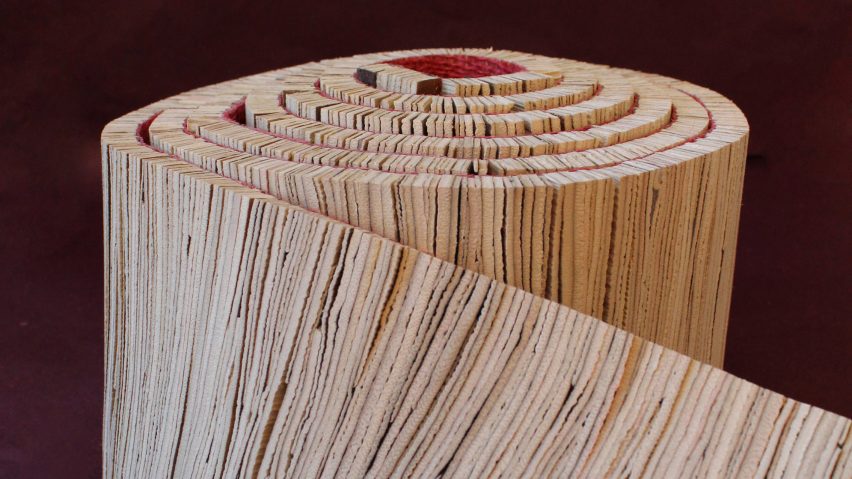
Palm leather rugs are vegan alternative to cow hide
Dutch designer Tjeerd Veenhoven's rugs made from a palm leaf material, called palm leather, are a sustainable and vegan alternative to traditional leather made from animal skin.
For the range of rugs, thin strips of the material are laid end to end by hand and attached to a woven base, before being cut to size. Any inconsistencies or folds in the strips are left to give a patterned appearance to the finished rug.
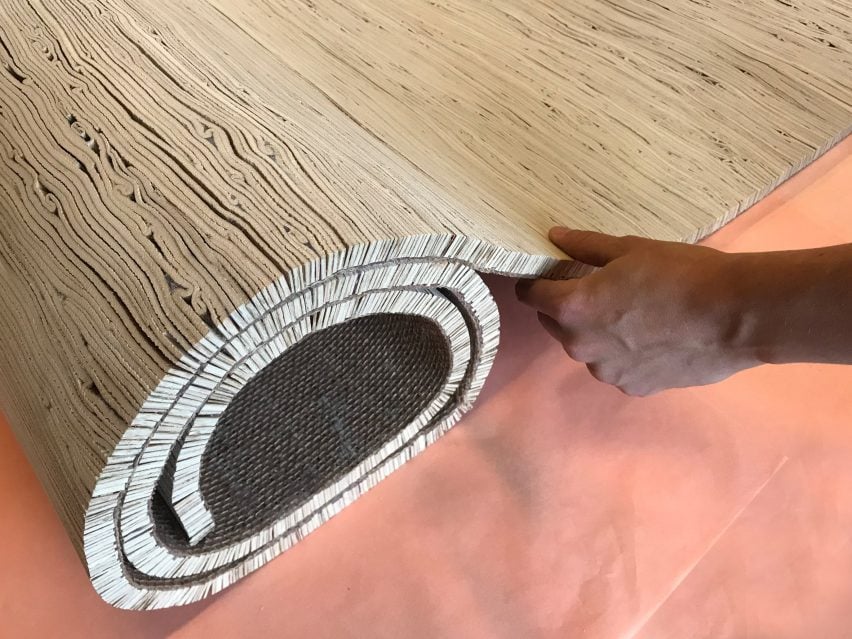
Dutch designer Veenhoven first started experimenting with leather made from palm leaves eight years ago after he became interested in the natural fibres of the tree's leaves, and asked someone he knew in India to send him some so that he could research them.
"In my material research I found out that the material was super brittle and not very useful, but if you soften it with a special material of glycerin and water, and some other materials you can make it nice and soft," explained Veenhoven.
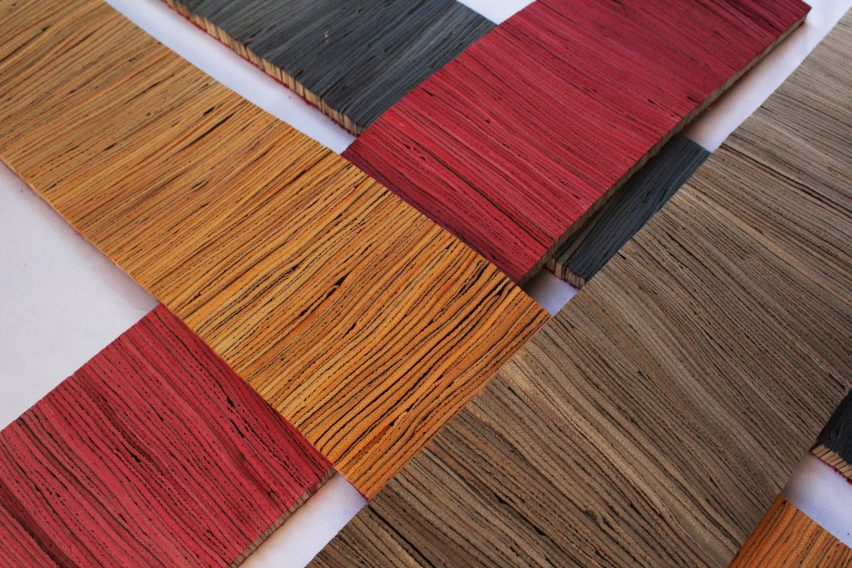
The designer and his studio then developed and refined the "leather" further, testing it out by making products with various companies. Initially he experimented with making the rugs in Holland, before testing out production at a factory in India.
The rugs are now made at a factory in the Dominican Republic where "they're experienced with green initiatives, so they have the necessary quality controls in place," and shipped directly to consumers.
As well as the rugs, the studio is hoping to sell the palm leather material as a product in its own right. There has been a lot of recent interest from the "extremely demanding" automotive companies who have recently become increasingly interested in vegan alternatives to leather car interiors.
Veenhoven explained that how palm leather has been perceived has changed over the years, from an initial interest in its potential use as an alternative to man-made leather substitutes, to the current spike in interest as a vegan material.
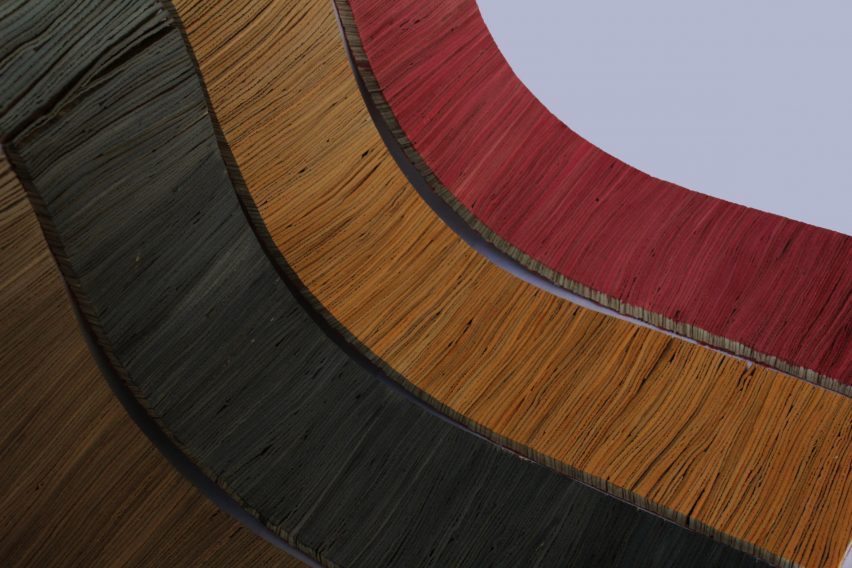
"It first was seen much more as a potential replacement of leather-like materials, or neoprenes or plastics – that was the first hook for people," he told Dezeen.
"Then it was a little bit connected to re-inventing craft, which has also been a topic of discussion, how can we make craftsmen more contemporary, and interestingly in the last two years it's been about it being vegan," he explained.
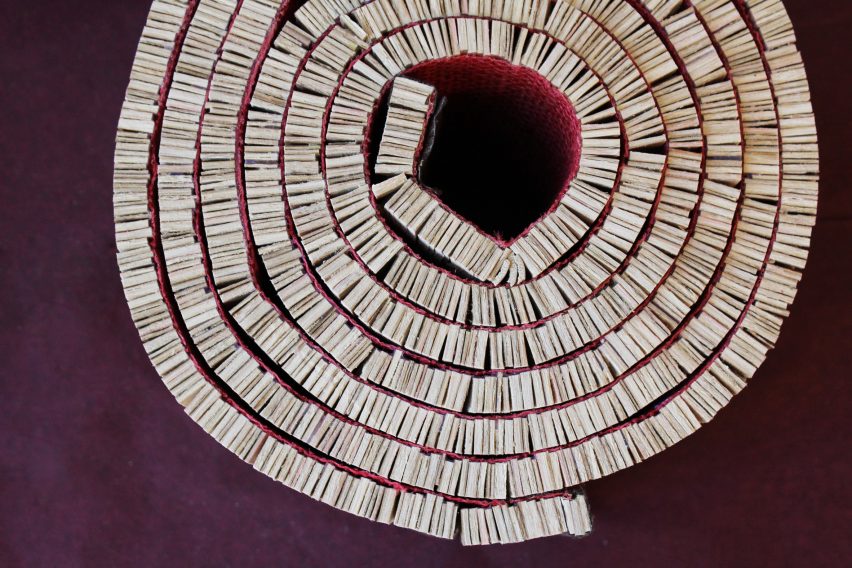
The move towards eating vegan and buying vegan products for the home, Veenhoven suggests, has been pushed by real problems that the world faces including the need to reduce the amount of meat that we eat.
"We have to focus more on plant-based systems and we have to encourage them more because they are essential to our livelihoods," said Veenhoven, who experiments with many alternative materials and systems at his studio in Groningen, northern Holland.
These views echo Nicolas Roope who told Dezeen that avoiding global disaster will be the greatest design challenge in history, in response to the recent UN report on climate change.
Back in 2016, the Campana brothers Fernando and Humberto, covered a house in Sao Paolo with palm fibre that gave it a hairy texture. Last year, graduate Billie van Katwijk made an alternative leather from cows' stomachs, rather than their hides.